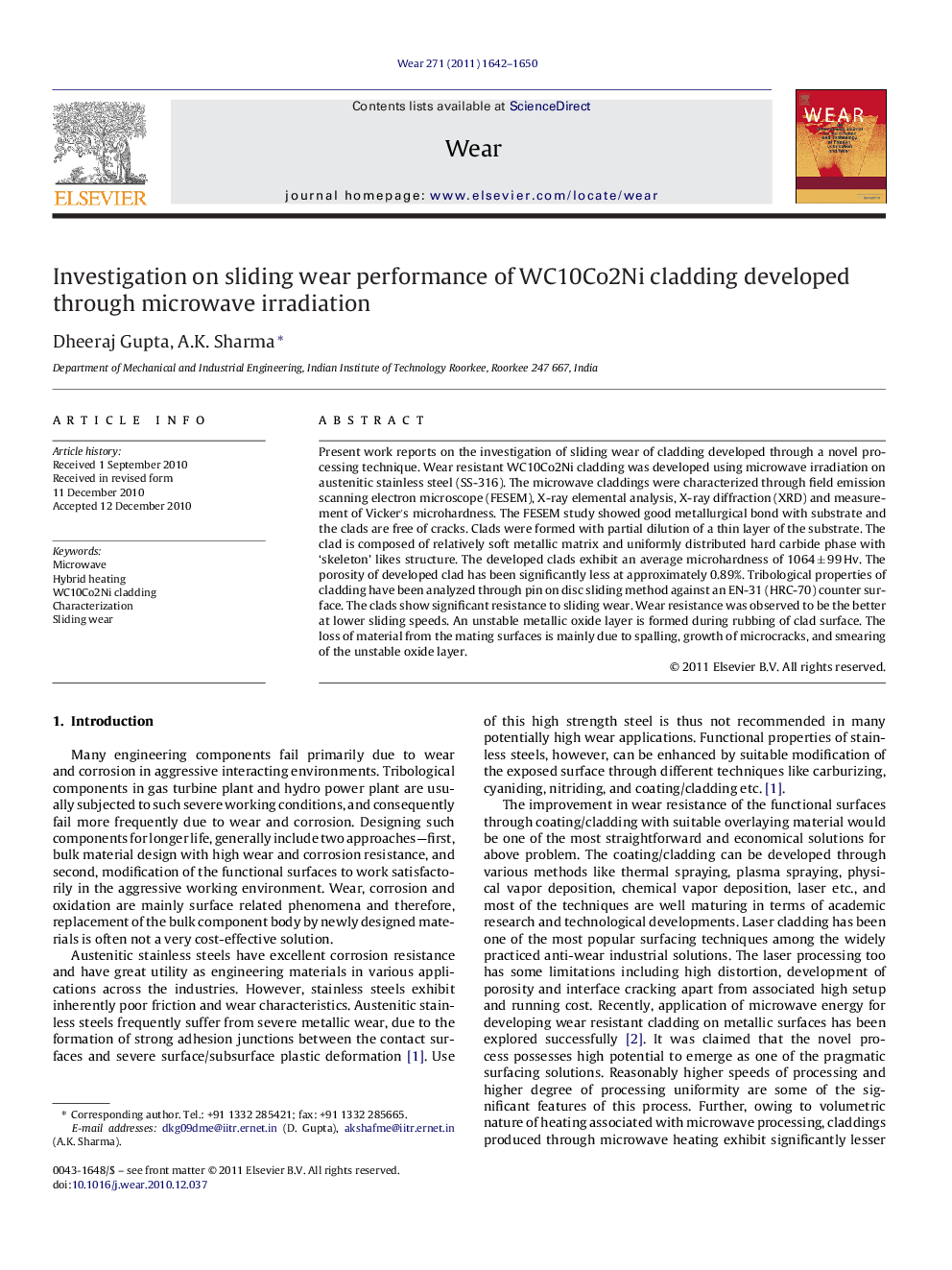| Article ID | Journal | Published Year | Pages | File Type |
|---|---|---|---|---|
| 618203 | Wear | 2011 | 9 Pages |
Present work reports on the investigation of sliding wear of cladding developed through a novel processing technique. Wear resistant WC10Co2Ni cladding was developed using microwave irradiation on austenitic stainless steel (SS-316). The microwave claddings were characterized through field emission scanning electron microscope (FESEM), X-ray elemental analysis, X-ray diffraction (XRD) and measurement of Vicker′s microhardness. The FESEM study showed good metallurgical bond with substrate and the clads are free of cracks. Clads were formed with partial dilution of a thin layer of the substrate. The clad is composed of relatively soft metallic matrix and uniformly distributed hard carbide phase with ‘skeleton’ likes structure. The developed clads exhibit an average microhardness of 1064 ± 99 Hv. The porosity of developed clad has been significantly less at approximately 0.89%. Tribological properties of cladding have been analyzed through pin on disc sliding method against an EN-31 (HRC-70) counter surface. The clads show significant resistance to sliding wear. Wear resistance was observed to be the better at lower sliding speeds. An unstable metallic oxide layer is formed during rubbing of clad surface. The loss of material from the mating surfaces is mainly due to spalling, growth of microcracks, and smearing of the unstable oxide layer.
► Cermet cladding (WC10Co2Ni) developed using microwave heating. ► Dilution of material identified using electron microscopy and X-ray technique. ► Confirmed cermet cladding with composite characteristics. ► The approach appears suitable for producing crack and porosity free clads. ► Sliding wear resistance of the microwave clads has been evaluated.
